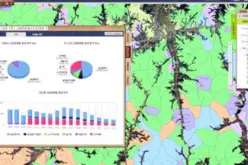It’s true — the digital mapping and analytics world is rapidly expanding, opening up new opportunities for businesses that know how to leverage this technology. However, despite its technological advancements and significant potential, businesses within this niche often grapple with the challenge of boosting sales.
In this blog post, we’ll explore the various strategies you can take to maximize your sales success in the geospatial industry.
From understanding customer needs and developing targeted marketing campaigns to leveraging technology advancements like machine learning and GIS analysis – these strategies can help boost your sales performance! So, let’s start by looking at some critical tips for improving sales in the geospatial sector.
Understanding the Geospatial Market
Before diving into sales strategies, it’s crucial to understand the geospatial market. This industry is incredibly diversified, with clients ranging from government organizations to private businesses.
According to a report by MarketsandMarkets, the global geospatial analytics market size is projected to grow from USD 78.5 billion in 2023 to USD 141.9 billion by 2028 at a Compound Annual Growth Rate (CAGR) of 12.6%. This highlights the expanding opportunities and potential for businesses in this sector.
The essential products and services include geographic information systems (GIS), satellite imagery, GPS technology, and drone mapping. It’s necessary to know your niche and understand the market before you develop any marketing strategies and sales pitches. Becoming an expert in your field will help you build trust and gain a better reputation from day one.
Know Your Audience
Understanding your target audience is critical. Different segments, like urban planners and environmentalists, have varying needs. Customizing your approach to address these individual needs improves client happiness and increases the possibility of sales conversion.
In addition to the audience, you should:
- Follow Market Trends and Innovations — The geospatial industry is dynamic, with constant technological advancements. Staying abreast of these changes and incorporating the latest innovations into your offerings can give you a competitive edge.
- Focus on Solutions — Instead of just selling a product, focus on providing solutions. Understand your clients’ challenges and demonstrate how your geospatial services can solve these problems.
Consider SMART Sales Objectives
The cornerstone of any successful sales strategy in the geospatial industry is setting smart sales objectives. These objectives should be Specific, Measurable, Achievable, Relevant, and Time-bound.
This approach helps create a focused sales plan that is realistic and effective in meeting the unique demands of the geospatial market. Keeping your focus on the right objectives will help your sales team perform better and easily recognize the need for improvement.
Leverage Technology
Because the geospatial market is all about cutting-edge technology, you must stay up with trends and utilize cutting-edge technology to illustrate the capabilities of your products and services.
What does this mean? You can include interactive demonstrations, VR experiences, and comprehensive online platforms that show the practical applications of your offers.
Educate Your Customers
Organizing webinars and workshops and publishing informative content can help demystify complex concepts, showcase the real-world benefits of your products, and help foster trust and interest.
Showing your potential customers that you have the knowledge will help you establish better relationships and improve your sales in the long run.
Build a Strong Online Presence
Continuing on the previous point, it’s important to acknowledge that we live in the digital age, and you have to keep up.
This means that any business, including the ones in the geospatial industry, needs to create a strong online presence. This should include a well-designed website, active social media platforms, and a digital marketing plan to boost your exposure and attract new clients. This is the time and place to show that knowledge and generate content that educates and engages.
Build Partnerships Through Networking
Establishing networks and partnerships within and outside the geospatial industry can open doors to new markets and opportunities. Attend industry conferences, join professional groups, and engage in collaborations to expand your reach.
Train Your Sales Team
The importance of a well-trained sales team in the geospatial industry cannot be overstated. In a field that is as specialized and technically complex as geospatial technology, the proficiency and knowledge of your sales team play a critical role in not just making successful sales but in building lasting relationships with your clients.
Here’s how you can enhance your sales team’s effectiveness through comprehensive training:
In-Depth Product Knowledge
Your team needs to have in-depth knowledge about the products and services you offer. They are your representatives in the real world and often first contact with the customers. That’s why it’s important for them to have expert knowledge and build that trusting bond.
Beyond just knowing the products, your team should understand how these products can be applied in various scenarios. For instance, how can GIS technology aid in urban planning, or how can drone mapping be beneficial for agricultural purposes?
Continuous Learning and Adaptation
The geospatial industry is continually evolving, and so should your training programs. Regular updates and continuous learning opportunities keep your sales team on the cutting edge. Motivate your sales team to learn and adapt to the latest trends in your industry and the latest salesman techniques.
Engage your team in role-playing scenarios and simulations. This hands-on approach allows them to practice and refine their sales techniques in a controlled environment.
Conclusion
The geospatial industry may be very competitive and technologically advanced. Still, at the end of the day, you need to consider the basic sales strategies that will work for your company. These techniques involve identifying your target market, being current on technology, and developing long-term connections with your clients.
Keep in mind that it’s not about the instant sales you make but rather the long-term effects you can make in your company. By implementing the suggested strategies, you will easily create a brand of credibility and surpass your competitors. With that, your sales are bound to increase and propel your business forward.











